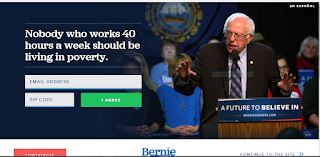Increasingly companies are adding
social media to their marketing strategies.
This is an effective strategy as increasingly more consumers are
engaging with social media sites.
In fact "In their State of Marketing 2015 report, Salesforce polled 5,000 marketers about their budgetary changes for this year and found that 70 percent of respondents planned to boost social media ad spend. 70 percent said that they will increase expenditure on organic (non-paid) social media marketing, too"
In fact "In their State of Marketing 2015 report, Salesforce polled 5,000 marketers about their budgetary changes for this year and found that 70 percent of respondents planned to boost social media ad spend. 70 percent said that they will increase expenditure on organic (non-paid) social media marketing, too"
It is important to incorporate a
social media in your overall strategy to promote engagement with your web site
and hence your product and brand. As
discussed in an earlier blog, email marketing is a very low cost alternative to
direct mail marketing; however it can be less effective overall. Integrating social media in the email
marketing efforts can be a strategy to enhance rather than replace marketing
efforts. Social Media is a way to
promote your content – messages and promotions to prospective customers and
stakeholders.
 http://www.business2community.com/social-media/4-ways-increase-revenue-social-media-01236612#MFtFfwE640O3MFPG.97
http://www.business2community.com/social-media/4-ways-increase-revenue-social-media-01236612#MFtFfwE640O3MFPG.97
A common practice among
email marketers is to include links to your social media sites.
Nearly every major corporation and small businesses have or
are planning to increase revenues with social media. According to a study by Cone Communications,
93% of customers expect companies to have a presence on social media (Bedgood
2015). Social media is an important
marketing platform for both B2Cand B2B marketing with Facebook being the most
dominate player. The chart below is from
the Social Media Examiner ((Bedgood, 2015) shows how marketers plan to use
social media. *(See
article in business2 community.com by Lisa Bedgood, May 27, 2015, “4 Ways to Increase Revenue with Social Media”
Email can be
used as product promotion or could be used to encouragement engagement on
social media. More often, companies are
offering incentives such as product discounts, free shipping or sweepstakes
contests for consumers to “Like” them on Facebook. Another effective engagement is to get
customers to follow your company and brand on Twitter or Pintrest. All of these marketing initiatives together
serve to bring more customers to your web site and gives you another
opportunity to increase engagement. You
own the brand and the content on your web site, blog, Podcast or YouTube and
social media can be an effective means to promote your business.





